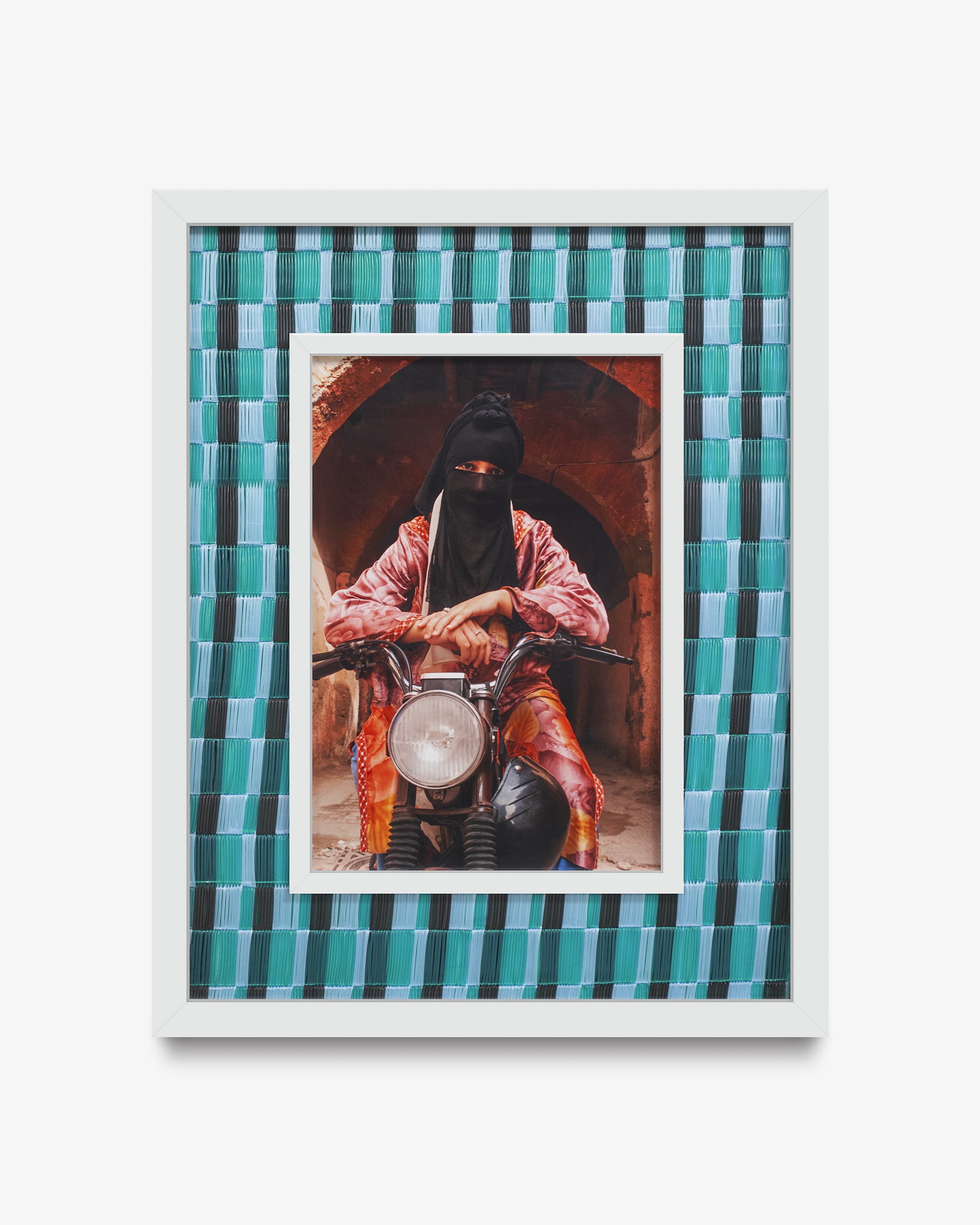All images © Hassan Hajjaj
People of My Time at Hannah Traore Gallery brings together 50 works spanning two decades, celebrating the intersection of tradition and pop-culture
The relationship between gallerist Hannah Traore and artist Hassan Hajjaj is not a new one. The two were acquainted when Traore first opened her namesake gallery in New York at 27 – Hajjaj was so impressed with the young Traore, who aims to represent creatives marginalised by Western institutions, that he was excited to present his work there on the occasion of the gallery’s inauguration in 2022. Now, he returns to present a solo show, People of My Time, which opened on 13 February, featuring 50 small pieces spanning over two decades of his career.
Born in Larache, Morocco, Hajjaj moved to London as a boy and has gone on to build a widely celebrated practice, borrowing from the popular visual culture of the Moroccan souk and appropriating aesthetic motifs from the region. Though Hajjaj has shot his fair share of celebrities, he was keen for this show not to direct attention away from the artist’s friends, creatives, and other cultural figures. “If I put a celebrity with 40 of my friends or people that I really believe in, all the press is going to ask me about that celebrity, every publication will want to use that picture,” Hajjaj explains. “And it just dampens 99 percent of the other images that sit in there. So much of the time, I choose not to show celebrity pictures.”
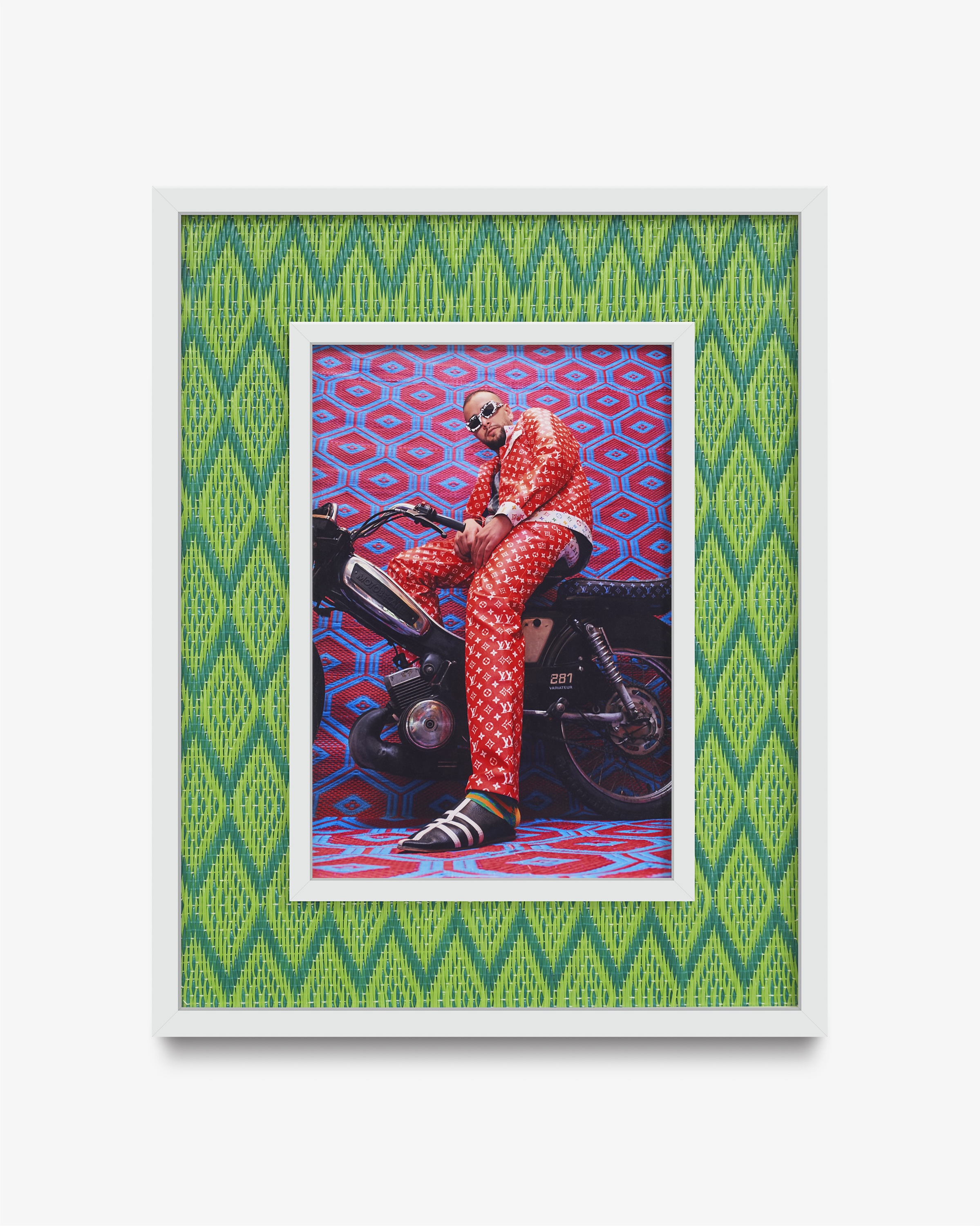

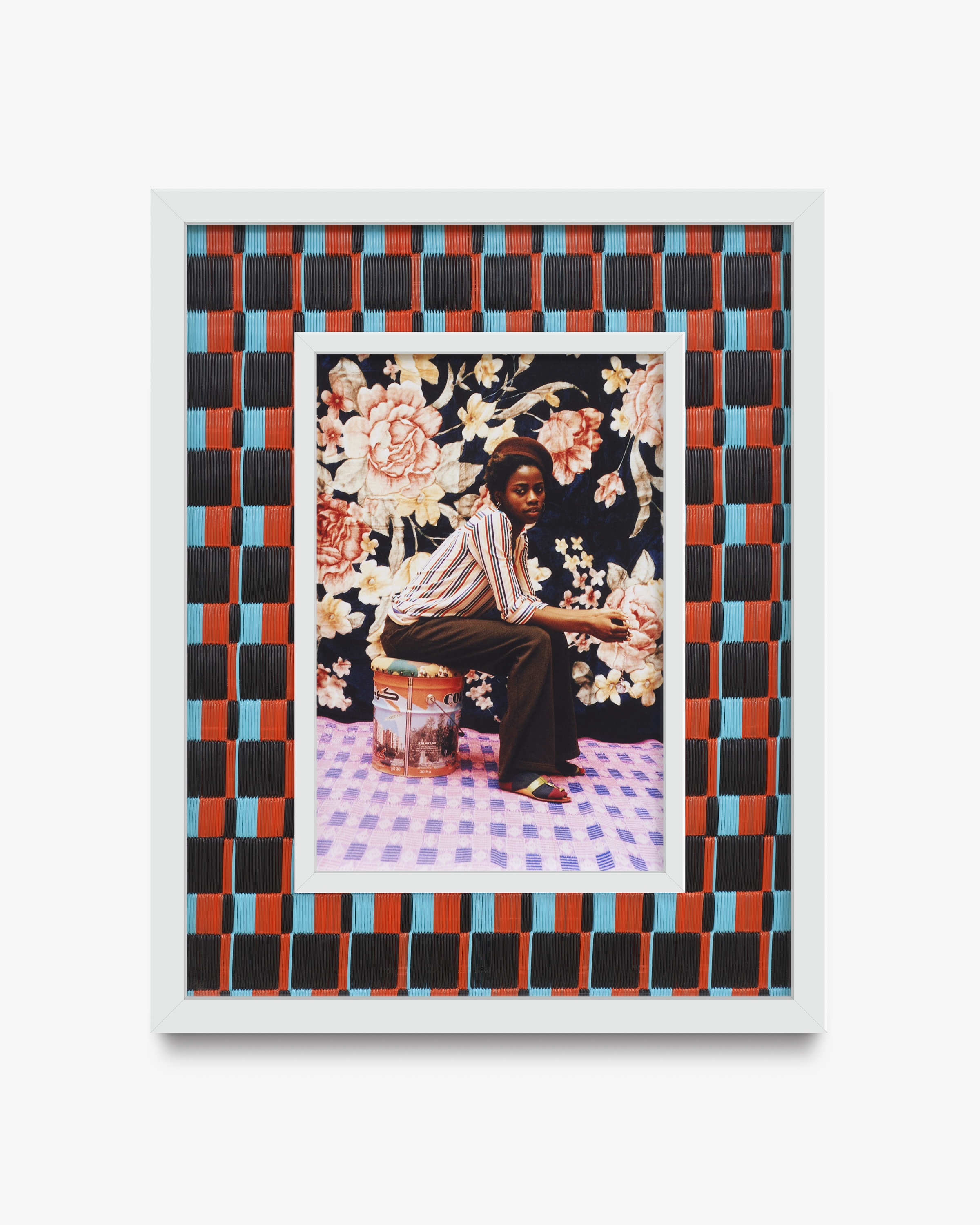
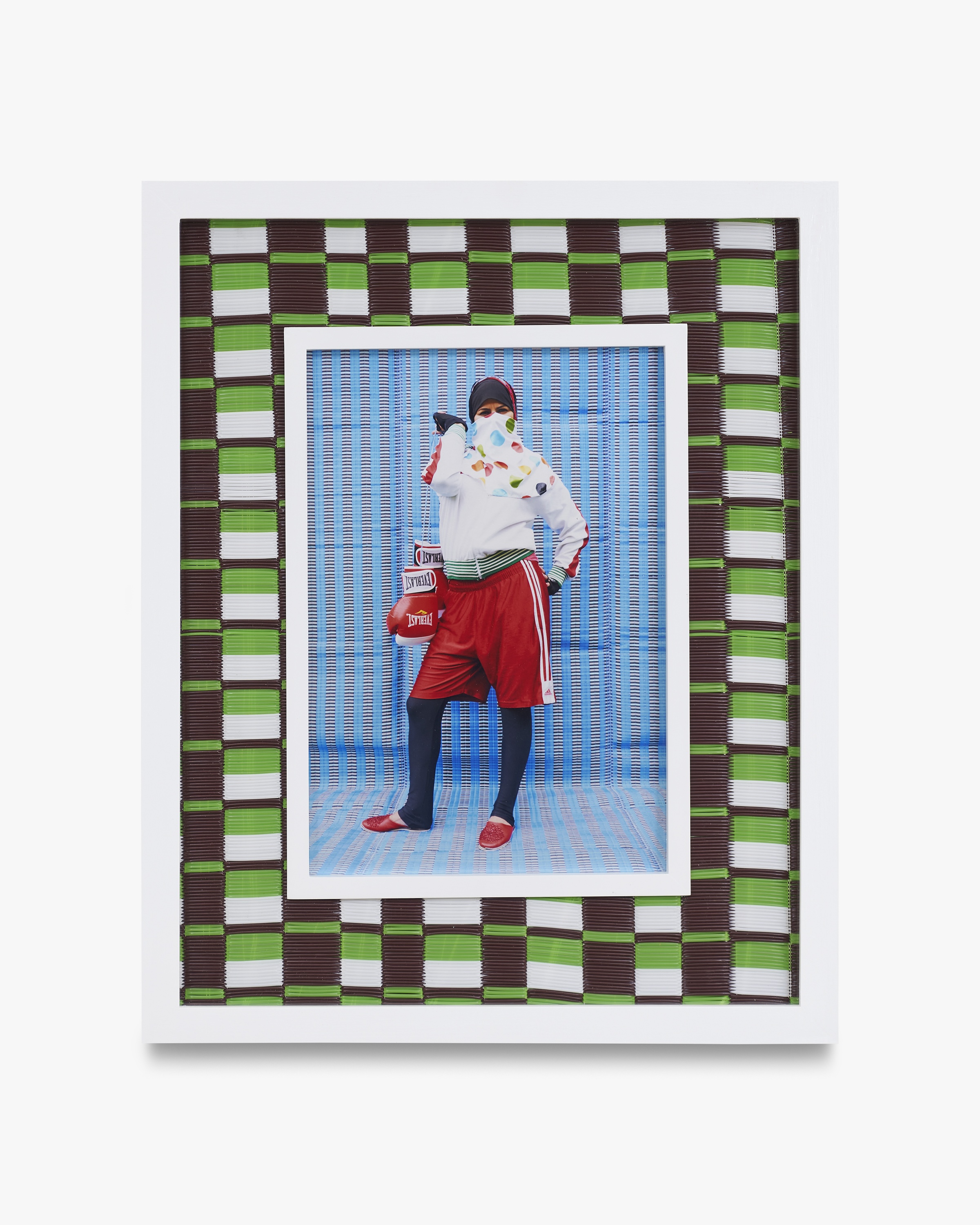
“Sometimes, when you try to clash two different cultures, it can come out wrong. Mine just worked because I tried to stay true to what was around me”
People of My Time presents a “village-like” representation of global identities, emphasising the diversity of his subjects but also Hajjaj’s desire to build a community around shared heritage, blending traditional practices with pop culture references of the current moment. The show also deals with Hajjaj’s time in a more literal sense: the artist enjoys viewing the work as memories of moments in time, as well as the journeys he’s been on. Designing much of the clothing his models are wearing, Hajjaj says that “I might have bought the fabric in Ludlow Street in New York and then I made it in Marrakesh, or I bought a fabric in Brick Lane and had it made in Marrakesh and shot it in LA. So there’s a lot of personal journeys there that people probably won’t see because all the shots are made out on the streets.”
Hajjaj’s upbringing in Morocco and later in London deeply shaped his artistic lens. “When I became a Londoner. I lived the London lifestyle,” he says. The influence of London’s creative scene in the 1980s – fashion, music, and running club nights through his brand Rap Street – helped him develop a unique artistic language that merges Moroccan traditions with contemporary global culture. However, this fusion is never forced: “Sometimes, when you try to clash two different cultures, it can come out wrong. Mine just worked because I tried to stay true to what was around me.”
The show reflects his growth as an artist, with images captured in various locations over 30 years, evolving from early street photography to his now well-known Maghrebi sets featuring seated, stylised subjects. In true North African and Middle Eastern fashion, Hajjaj incorporates recycled and repurposed materials in his work, reflecting the Moroccan tradition of reuse. Rich in symbolism creating a dialogue between East and West, Hajjaj uses twine, tarpaulin and scarfs featuring prints such as the keffiyeh.
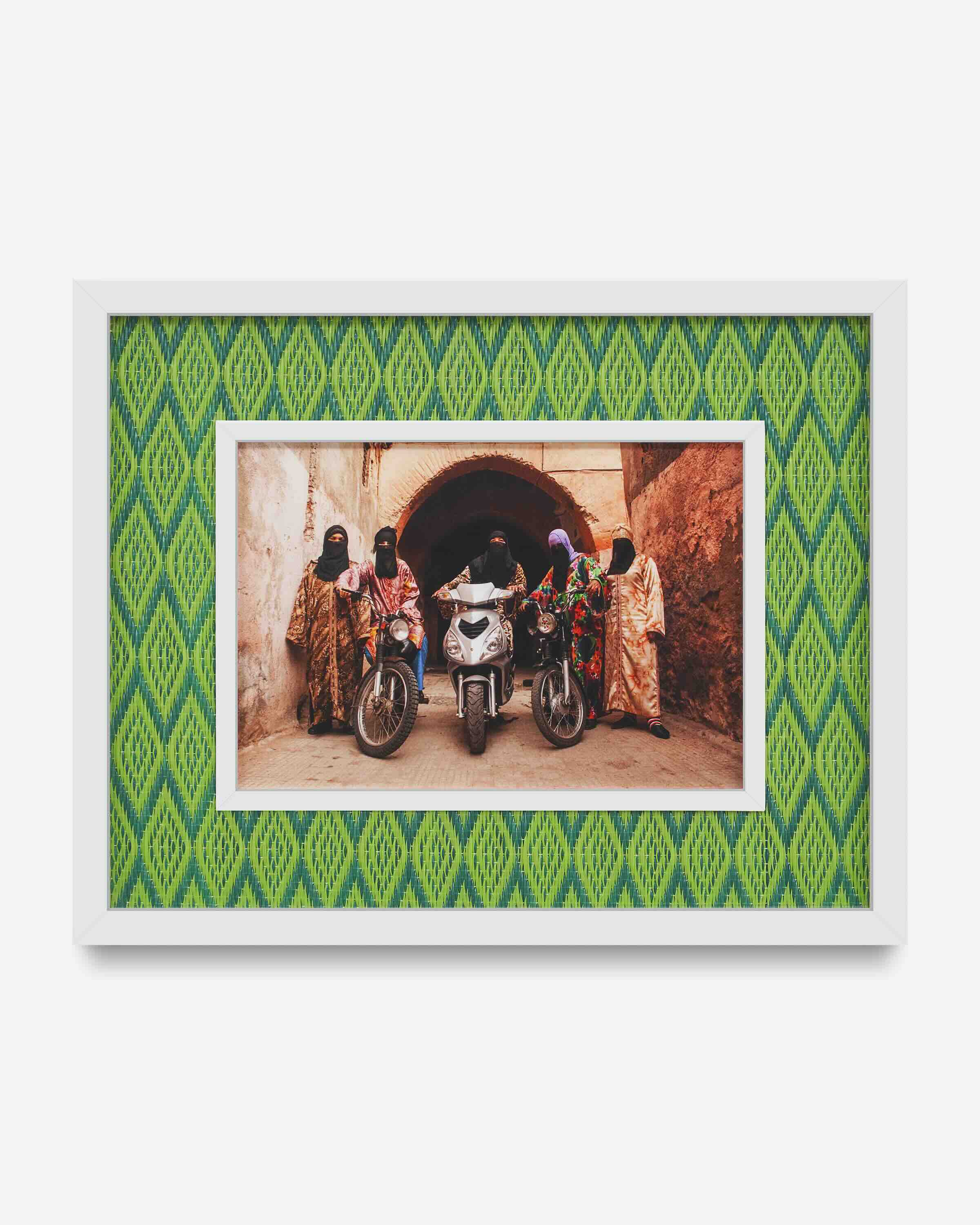
“I grew up with a culture of recycling in Morocco. That was just normal. When I started shooting, I was using counterfeit products – I’d go and buy a Louis Vuitton scarf and make a kaftan out of it. Or buy the cheap blankets we use everywhere in Africa, the ones that look like Versace, and make an outfit out of them.” His signature style includes branded elements like Coca-Cola logos in Arabic, reframing Western symbols within his cultural lens. Cultural symbolism leaps out from the image and literally frames the images, with frames made from harissa cans, spice jars and colourful tins of tea leaves.
Hajjaj is currently collaborating with Tunisian graffiti artist El Seed on a limited-edition olive oil project, designing bottles and preparing a solo exhibition on-site. He has a potential museum show in Marrakesh, a project for the African Football Cup in Morocco, and solo exhibitions planned in France and Australia.
Hajjaj’s community-driven practice will also activate the gallery with a teashop, inspired by Jajjah, his tearoom and gallery space in Marrakech. By inviting audiences to gather and converse over a cup of Moroccan tea, the gallery is transformed into a tangible, homely extension of the work on view.

